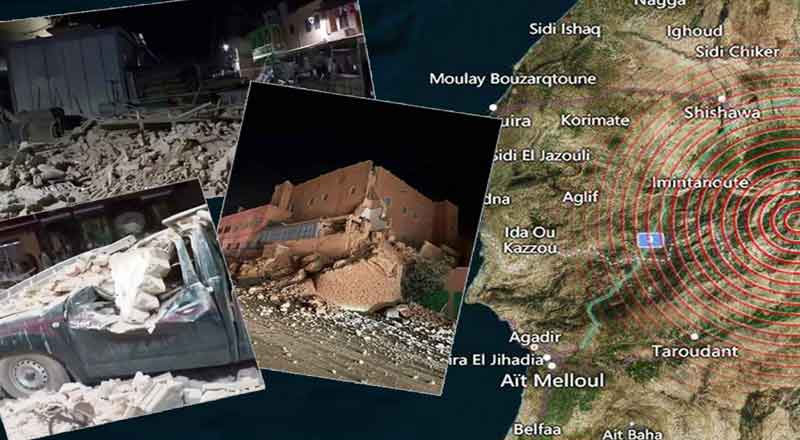- Preliminary count lists 153 injured
- Most dead are in hard-to-reach mountain areas, official says
- Marrakech residents report damage in the historic oldz city.
- People flee houses in Casablanca, Rabat, and elsewhere.
- Moroccan media reported it was the most powerful earthquake to hit the country to date.
- In 2004, at least 628 people were killed and 926 injured when a quake hit Al Hoceima in northeastern Morocco. A powerful earthquake struck Morocco’s High Atlas Mountains late on Friday, killing at least 296 people, destroying buildings and sending residents of major cities rushing from their homes. according to a preliminary government count, with Marrakesh residents reporting “unbearable” screams following the 6.8-magnitude quake.
The Interior Ministry said the number constituted a preliminary death toll and that 153 people had been injured. A local official said most deaths were in mountain areas that were hard to reach.
Residents of Marrakech, the nearest big city to the epicenter, said some buildings had collapsed in the old city, a UNESCO World Heritage site, and local television showed pictures of a fallen mosque minaret with rubble lying on smashed cars.
“According to a provisional report, the earthquake killed 296 people in the provinces and municipalities of Al-Haouz, Marrakesh, Ouarzazate, Azilal, Chichaoua, and Taroudant,” Morocco’s interior ministry said in a statement.
“We felt a very violent tremor, and I realized it was an earthquake,” Abdelhak El Amrani, a 33-year-old in Marrakesh, told the news agency by telephone.
“I could see buildings moving. We don’t necessarily have the reflexes for this type of situation. Then I went outside and there were a lot of people there. People were all in shock and panic. The children were crying and the parents were distraught.”
Video circulating on social media showed part of a minaret collapsed on the famous Jemaa el-Fna square in the historic city, injuring two people.
The interior ministry said authorities have “mobilized all the necessary resources to intervene and help the affected areas”. Hospitals in Marrakesh reportedly saw a “massive influx” of injured people.
The regional blood transfusion center in Marrakesh has called on residents to donate blood for those injured.
The quake struck 44 miles (71 kilometers) southwest of tourist hotspot Marrakesh at a depth of 18.5 kilometers at 11:11 pm (2211 GMT), the US Geological Survey said. It was also felt in the coastal cities of Rabat, Casablanca, and Essaouira. USGS’s PAGER system, which provides preliminary assessments on the impact of earthquakes, issued an orange alert for economic losses, estimating significant damage is likely.
Past events with this alert level have required a regional or national-level response, according to the US government agency. USGS said that “the population in this region lives in structures that are highly vulnerable to earthquake shaking”.
Internet connectivity was disrupted in Marrakesh due to power cuts, according to global internet monitor NetBlocks. Moroccan media reported it was the most powerful earthquake to hit the country to date. The earthquake was also felt in neighboring Algeria, where the Algerian Civil Defence said it had not caused any damage or casualties.
In 2004, at least 628 people were killed and 926 injured when a quake hit Al Hoceima in northeastern Morocco. In 1980, the 7.3-magnitude El Asnam earthquake in neighboring Algeria was one of the largest and most destructive earthquakes in recent history. It killed 2,500 people and left at least 300,000 homeless.
(With inputs from agencies)





